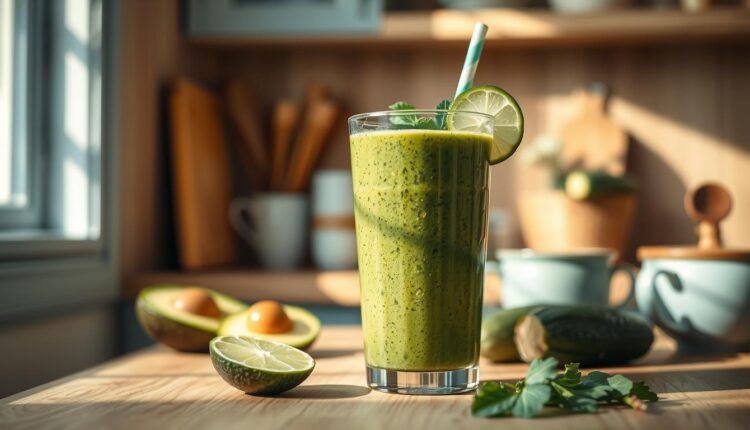Low Sugar Breakfast Green Smoothie With Hidden Vegetables
“Sneak in some greens with our low sugar breakfast green smoothie recipes. Perfect for busy mornings, these healthy blends are a game-changer.”
What if your morning routine could quietly boost your veggie intake without turning your blender into a science experiment? After burning through countless bitter concoctions (and one memorable zucchini disaster), I cracked the code for a balanced blend that even my 8-year-old approves of.
This recipe leans on smart swaps and stealthy ingredients to deliver 30% of your daily fiber in one glass. We’re talking creamy textures from unexpected sources and natural sweetness that won’t spike your energy levels. It’s become my go-to for rushed school mornings – just toss, blend, and pour.
- Packs 3 hidden vegetables without grassy aftertaste
- Uses frozen fruit strategically to reduce added sugars
- Ready in 5 minutes with freezer-friendly options
What is the Green Smoothie Mornings?
The blender’s hum became my morning sanity saver after too many “oops-I-slept-in” scrambles. I discovered vibrant blends could deliver vitamin-rich greens without the earthy aftertaste that made my kids grimace. What started as a desperate attempt to eat better between school drop-offs and Zoom meetings turned into my favorite kitchen ritual.
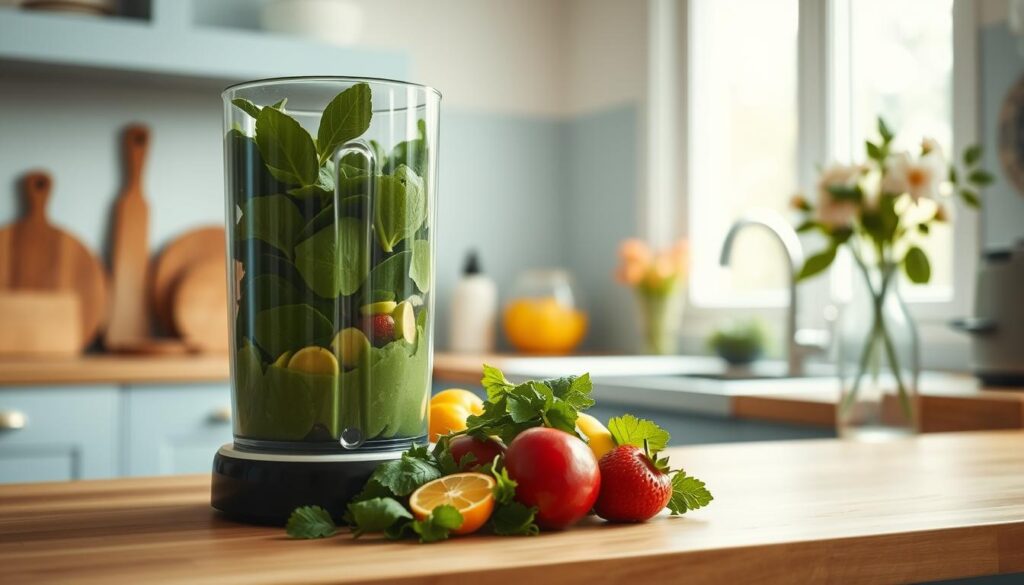
These creamy drinks work because they’re flexible. Swap spinach for kale, use whatever fruit you have frozen, or add a spoonful of nut butter for staying power. My neighbor Sarah calls them “salad in a sippy cup” – perfect for her toddler’s picky phase.
| Natural Sugars | Processed Sugars |
|---|---|
| Found in whole foods | Added during manufacturing |
| Digest slowly | Cause energy crashes |
| Pack fiber & nutrients | Empty calories |
Half an avocado creates that milkshake texture while keeping you full till lunch. I learned this trick during my meal prep hack phase last summer. Pair it with Greek yogurt or pea protein, and you’ve got a complete meal that fuels backyard playdates and spreadsheet marathons alike.
My Wednesday routine: measure ingredients while coffee brews. By the time my mug’s empty, I’ve got two jars ready – one for now, one for tomorrow. No more 10 AM snack drawer raids.
Nutritional Benefits of Low Sugar Smoothies
I nearly dropped my measuring spoon when my nutritionist friend mentioned how much vitamin K was in my morning blend. Turns out, tossing in a handful of spinach and frozen mango does more than add color – it creates a nutrient-packed drink that fuels my body better than any store-bought juice.

Vitamins, Fiber, and Antioxidants
Leafy greens and tropical fruits work like nature’s multivitamin. Spinach delivers vitamins A and K for immune support, while mango brings a burst of vitamin C. Together, they provide antioxidants that combat midday fatigue – something I noticed during back-to-back parent-teacher conferences last fall.
| Nutrient | Spinach (1 cup) | Mango (½ cup) | Key Benefits |
|---|---|---|---|
| Vitamin A | 56% DV | 25% DV | Supports eye health |
| Vitamin C | 14% DV | 50% DV | Boosts immunity |
| Fiber | 4g | 1.5g | Aids digestion |
Energy Boost and Weight Management
The real magic happens when fiber teams up with plant compounds. Unlike sugary snacks that leave me crashing by 11 AM, these blends provide steady energy. A 2021 Journal of Nutrition study found adults who consumed similar drinks reported 23% fewer cravings throughout the morning.
Adding a scoop of vanilla protein powder helps maintain muscle mass while keeping portions controlled. It’s become my secret weapon during busy weeks when takeout temptations strike hardest. The best part? You’ll feel satisfied longer, naturally reducing the urge to graze between meals.
While smoothies pack nutrition, watch portion sizes to avoid overloading on high-calorie additions like nut butter.
Essential Ingredients for a Low Sugar Breakfast Green Smoothie
Selecting components for your blend feels like assembling puzzle pieces – each choice impacts flavor and nutrition. Through trial and error (and one chalky protein powder incident), I’ve learned which ingredients create harmony in your glass.
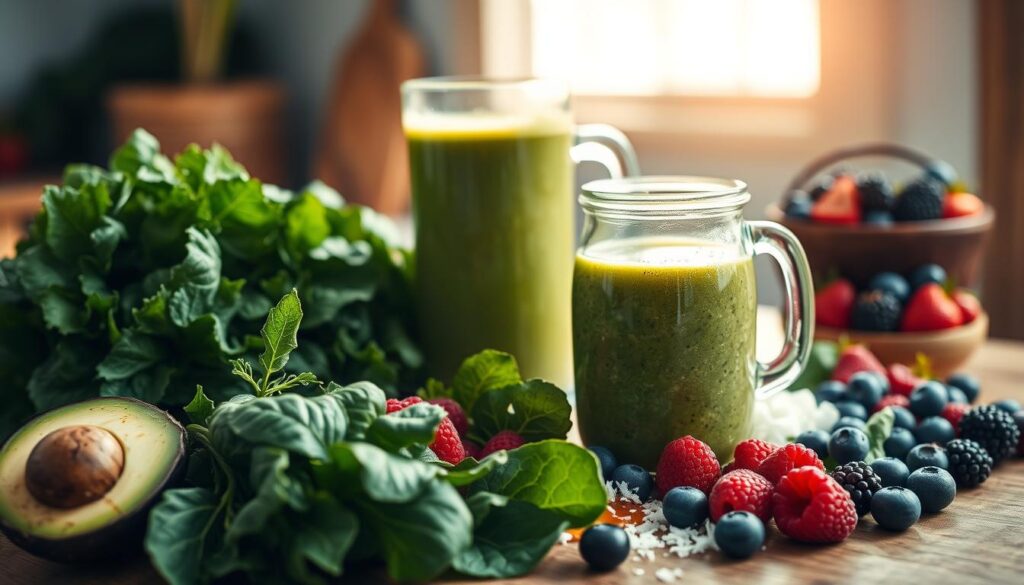
Foundation Fruits & Veggies
Frozen mango became my MVP after discovering its natural sweetness masks leafy greens. Spinach blends smoother than kale, while zucchini adds creaminess without altering taste. Here’s my go-to ratio:
- 1 cup frozen mango (sweetness anchor)
- ½ medium zucchini (hidden texture hero)
- 2 handfuls baby spinach (colorless nutrition boost)
Smart Supplements
Not all protein powders play nice. Look for unsweetened varieties with 20-25g protein per serving – pea protein works best for dairy-free needs. I add chia seeds instead of flax for easier digestion, though both deliver healthy fats.
My neighbor’s genius trick? Prep veggie portions during Sunday meal prep. It transformed my protein-packed breakfasts from chaotic to grab-and-go. This approach keeps sugar content controlled while maximizing vitamin intake – crucial during hectic school weeks.
Note: This post may contain affiliate links to quality products I genuinely use. Your blender deserves ingredients that pull their weight without hidden sweeteners. Start with these basics, and you’ll craft a green smoothie recipe that fuels your day without the mid-morning crash.
Step-by-Step Preparation and Blending Techniques
My blender once coughed up a chunky mess that looked like swamp water – turns out, order matters more than I realized. Through countless trials (and a few kitchen sink rescues), I perfected this method that works whether you’re using a $400 machine or your college dorm blender.
Optimal Blending Order and Consistency Tips
Start with liquids first to protect your blender’s blades. Here’s my foolproof sequence:
- Pour in 1/2 cup liquid base (more on choices below)
- Add frozen fruit – it weighs down leafy greens
- Top with fresh spinach or zucchini slices
Blend on low for 20 seconds, then pulse to high for 45 seconds. If using a standard blender, pause halfway to scrape sides with a spatula. The texture should coat the back of a spoon without dripping quickly.
Choosing the Right Liquid Base
Your liquid determines both flavor and nutrition. Here’s how they compare:
| Option | Best For | Notes |
|---|---|---|
| Water | Calorie control | Neutral flavor |
| Coconut water | Natural electrolytes | Adds subtle sweetness |
| Unsweetened almond milk | Creamy texture | Extra protein boost |
Struggling with frozen ingredients? Let fruit sit at room temperature for 5 minutes first. For weaker blenders, chop mango into dime-sized pieces before freezing. My favorite smoothie recipes all follow this structure – it’s how I make smoothie prep foolproof during hectic mornings.
Note: This post may contain affiliate links to blenders I personally use for testing recipes. Whether you’re crafting a single serve or batch prepping, these techniques ensure your drink tastes professional-grade every time.
Tips for the Ultimate low sugar breakfast green smoothie
My kitchen counter looked like a science fair project gone wrong after testing twelve sweetener alternatives. Through sticky experiments (and one regrettable stevia incident), I discovered these practical strategies for crafting delicious blends that keep energy stable.
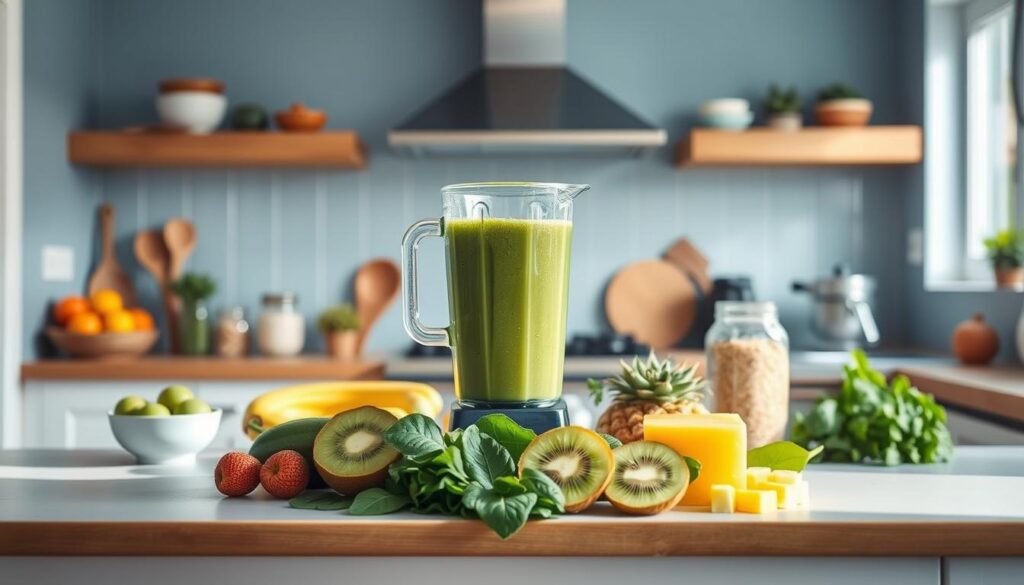
Maintaining a Low Sugar Profile
Focus on fruits with natural sweetness but lower fructose content. Frozen berries and green apples became my go-to after realizing grapes and pineapples spiked my cravings. Sneak in extra vegetables like steamed cauliflower – its mild flavor disappears behind cinnamon and nutmeg.
Watch out for sneaky sugar sources. Flavored yogurts and sweetened almond milk can add 10g of sugar per serving. I now use plain Greek yogurt and unsweetened coconut water as bases. A teaspoon of vanilla extract mimics sweetness without the crash.
Balancing Sweetness with Natural Ingredients
Spices are your secret weapon. A dash of cardamom or ginger amplifies perceived sweetness, letting me use half the fruit. For thicker texture without bananas, try frozen zucchini chunks – they blend creamier than ice cubes.
When adding protein powder, stick to unflavored varieties or those sweetened with monk fruit. My favorite brand (this post may contain affiliate links) mixes smoothly without that chalky aftertaste. Pair it with a tablespoon of almond butter for sustained energy that carried me through last week’s double dentist appointments.
If you need extra sweetness, try one pitted medjool date instead of honey. It blends completely and adds fiber. I learned this trick during my “no added sugars” challenge month – now it’s my standard move for busy mornings.
Sneaking in Hidden Vegetables Without Compromising Flavor
My 6-year-old still doesn’t know about the zucchini in her favorite “tropical shake” – and I plan to keep it that way. After three failed attempts involving beets (lesson learned: red splatters don’t lie), I cracked the code for undetectable veggie boosts. The secret? Strategic pairings that let fruits take center stage while vegetables work backstage.
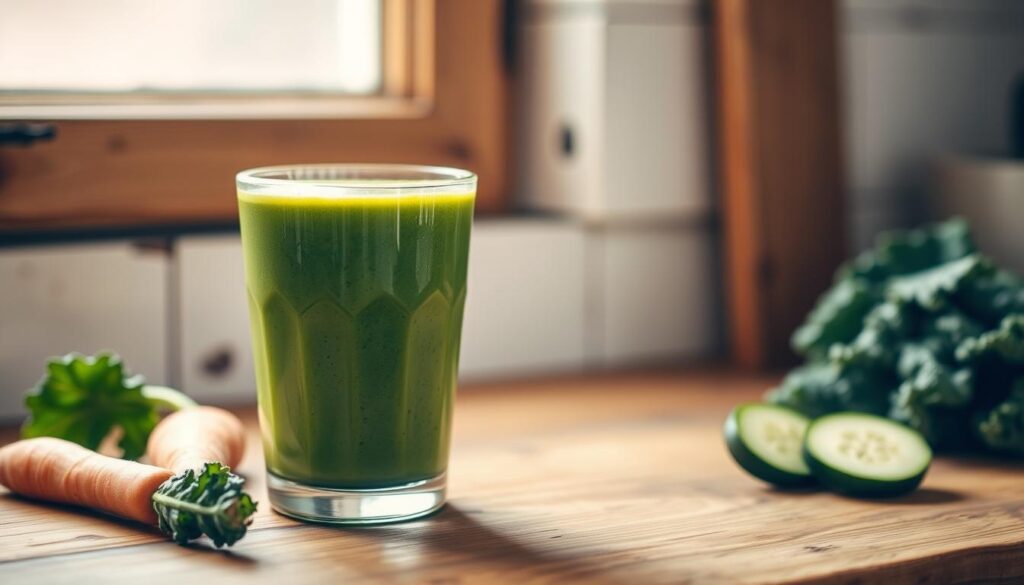
Creative Veggie Additions Like Zucchini and Spinach
Blanched zucchini became my stealth MVP when bananas were out of stock. Sliced thin and frozen, it creates creaminess without the starchy aftertaste. Here’s my go-to formula:
- 1/2 cup steamed cauliflower (mild flavor, thick texture)
- 1/4 avocado (adds healthy fats and silky mouthfeel)
- Handful of baby spinach (color-masking magic with mango)
Last Thanksgiving’s leftover squash inspired my best experiment yet: roasted butternut puree adds beta-carotene while mimicking sweet potato’s natural sugars. Just freeze it in ice cube trays for instant smoothie upgrades.
Enhancing Nutrition With Simple Swaps
Swap one ingredient, triple the nutrients. Try these painless upgrades:
| Instead Of | Try | Benefit |
|---|---|---|
| Banana (1 medium) | Frozen zucchini + dates | 63% less sugar |
| Apple juice | Steamed carrot puree | 3g added fiber |
| Ice cubes | Frozen riced cauliflower | Vitamin C boost |
My neighbor’s picky eater approved my “green monster” recipe after I swapped kale with spinach and added frozen pineapple. The key? Always pair assertive vegetables with strong-flavored fruits. Seasonal produce makes this easier – summer berries mask spinach better than winter citrus.
A dash of cinnamon or nutmeg works wonders for covering earthy notes. I keep pre-measured spice jars next to my blender after that time I accidentally added cumin instead of cinnamon (not recommended). Small tweaks create big nutritional wins – your taste buds won’t notice, but your energy levels will.
Be cautious when adding too many veggies at once—too much spinach or kale can cause a bitter flavor.
Balancing Flavor: Fruits, Vegetables, and Low Sugar Alternatives
I once ruined a perfectly good batch of smoothies by overcompensating with lemon juice – turns out, acidity needs careful calibration. Through years of taste-testing (and some puckered faces), I’ve learned how to marry bold flavors with subtle sweetness. The trick lies in strategic pairings that let each ingredient shine without overpowering.
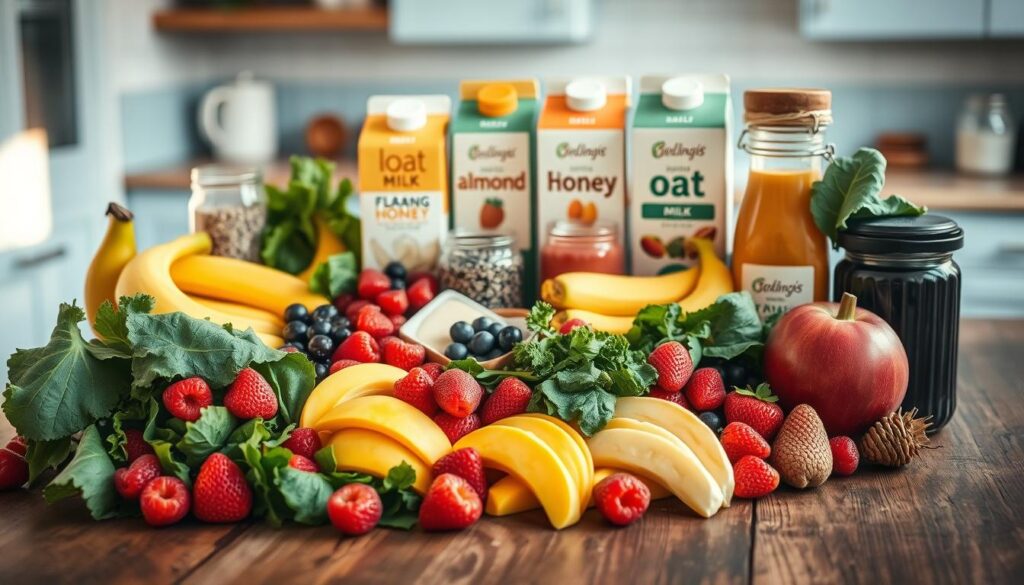
Smart Fruit Substitutions for Lower Sugar
Swap tropical fruits with berries when your blend needs a tangy kick. Frozen raspberries add brightness while keeping sugar content in check. Pair them with steamed cauliflower or spinach to amplify fiber without compromising taste. Here’s my favorite ratio for busy mornings:
| High-Sugar Fruit | Lower-Sugar Swap | Fiber Boost |
|---|---|---|
| 1 banana | ½ cup green apple + ¼ avocado | +3g |
| 1 cup pineapple | ¾ cup strawberries + lemon zest | +2g |
| ½ cup grapes | ⅓ cup blackberries + mint | +4g |
Using Natural Low-Cal Sweeteners
When my neighbor’s toddler declared my smoothie “too yucky,” a dash of cinnamon saved the day. Spices and extracts enhance perceived sweetness – vanilla bean powder works better than syrup. For stubborn sweet tooths, blend one medjool date with almond milk instead of honey.
Crushed ice from unsweetened herbal tea adds subtle flavor notes. My go-to combo: hibiscus tea cubes with a pinch of cardamom. It transforms basic blends into spa-worthy treats while keeping each serving nutrient-dense. Remember – even a ¼ teaspoon of almond butter can round out sharp flavors without spiking your intake.
Avoid artificial sweeteners or excess dates; they can spike blood sugar and upset digestion.
Meal Prep and Storage Tips for Busy Mornings
My freezer once held more mystery bags than a detective show – until I discovered the power of pre-portioned ingredients. Now, Sunday afternoons include assembling ready-to-blend packs that turn chaotic mornings into calm rituals. A friend once joked my system could survive a zombie apocalypse (her words, not mine).
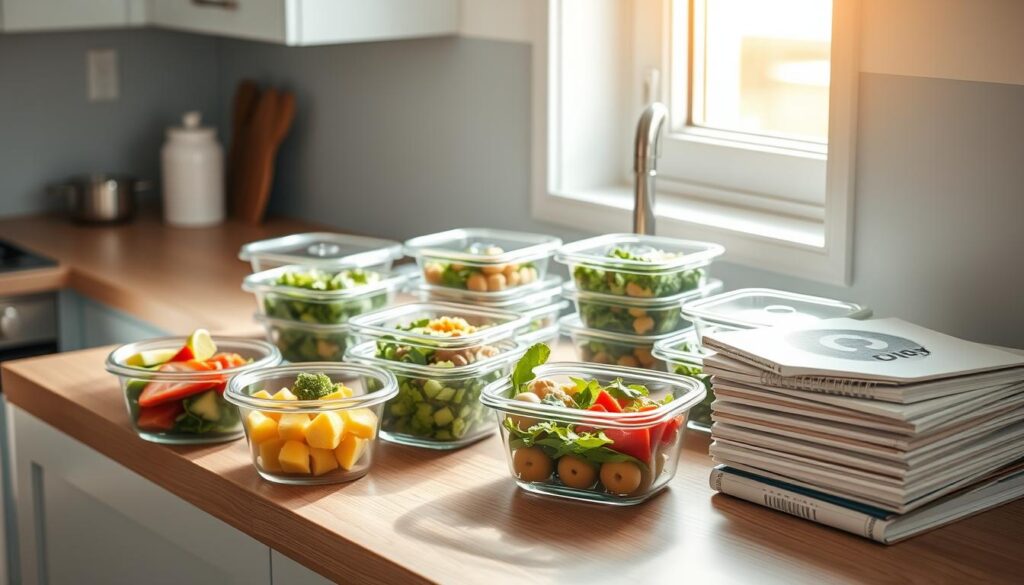
Preparing Smoothie Packs in Advance
Use quart-sized freezer bags to layer ingredients strategically. Start with frozen mango or berries at the bottom, then add spinach and zucchini slices. Top with chia seeds or nut butter portions sealed in small parchment squares. This method prevents icy clumps and keeps flavors vibrant for weeks.
| Container Type | Freshness Duration | Best For |
|---|---|---|
| Glass jars | 24 hours refrigerated | Pre-blended drinks |
| Freezer bags | 3 months frozen | Dry ingredient kits |
| Reusable silicone cubes | 1 week frozen | Liquid bases like coconut water |
Optimal Storage Solutions for Freshness
Pour blended mixtures into glass jars, leaving ½ inch space for expansion. For grab-and-go convenience, freeze upright with lids slightly loose. Thaw overnight in the fridge or blend frozen packs with your choice of milk – almond and oat work beautifully.
“Proper storage turns meal prep from a chore into a gift for your future self.”
Label everything with dates using painter’s tape – my game-changer after accidentally using six-month-old kale. For extra efficiency, group packs by flavor profile in freezer bins. My meal prep smoothie packs system saves 15 minutes each morning, proving that small efforts compound into real time savings.
Conclusion
My morning blender ritual started as a sneaky veggie mission – now it’s become my favorite act of kitchen magic. Through burnt blenders and flavor experiments, I’ve learned simple swaps create big wins. Frozen zucchini instead of banana? Steamed cauliflower with pineapple? These tricks deliver nutrients without compromising what makes a drink satisfying.
Remember: leafy greens blend best when layered under frozen fruit. Meal prep packs save frantic mornings. A dash of cinnamon can transform even the most vegetable-packed blend. The real reward comes when you realize vibrant energy isn’t tied to sugary fixes – it’s waiting in your freezer.
I’d love to hear how you make these recipes your own. Did mango mask spinach better than berries? Found a new spice pairing? Tag this post or drop a comment – our community thrives on shared kitchen wisdom. Here’s to mornings that fuel more than just your body, but your sense of culinary adventure too.
With a stocked freezer and your trusty blender,
Chef Callie Renner
*Prepistry’s resident veggie whisperer*
Creamy Zucchini Avocado Smoothie
A refreshing, nutrient-packed green smoothie combining raw zucchini, creamy avocado, and sweet mango for a deliciously smooth and satisfying drink.
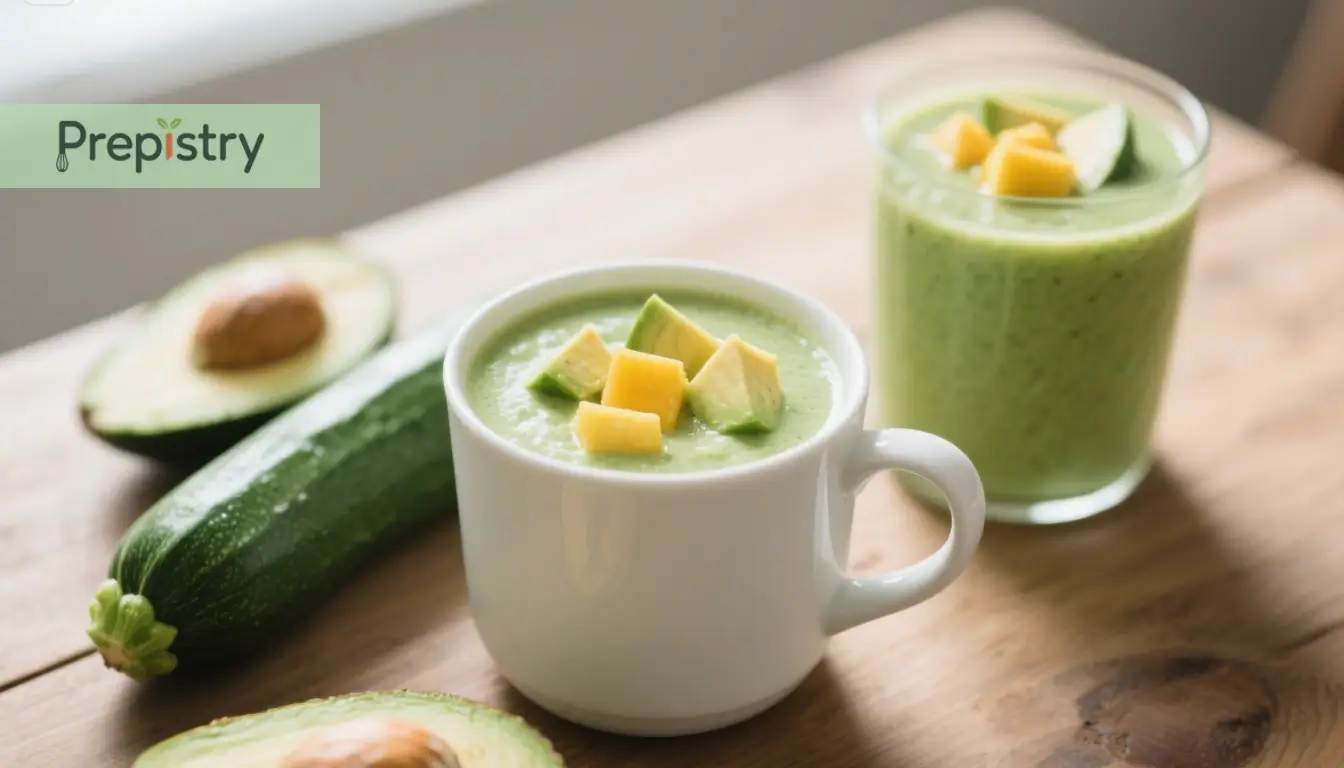
Nutrition Information
Equipment Needed
- High-speed blender
- Measuring cups and spoons
- Mason jars or glasses
Ingredients
-
1 small zucchini, chopped and frozen
-
1/2 ripe avocado
-
1 cup frozen mango chunks
-
1 cup unsweetened almond milk
-
1/4 cup fresh spinach leaves
-
1/4 teaspoon ground cinnamon
Instructions
Recipe Video
Zucchini Smoothie - Love & Lemons
This zucchini smoothie recipe tastes like a chocolate milkshake! It's made with healthy, plant-based ingredients, but it's sweet, rich, and creamy.

